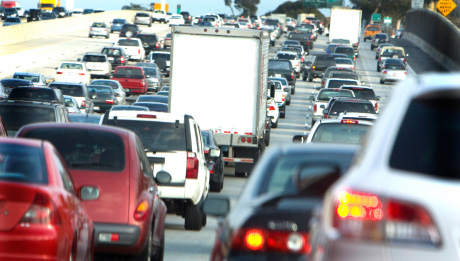Summer vacation road trips: Tips on how to avoid traffic jams
JoAnna Haugen
If you’re like most Americans, you’ve worked hard over the past year to earn a couple weeks away from work. And finally, the bags are packed, the kids are belted into the back seat and the car’s tank is filled with gas. It’s time to begin your summer vacation.
That is, until you hit the traffic jams.
According to a report released by the U.S. Census Bureau in March 2013, more than 8 percent of U.S. workers have commutes of 60 minutes or longer. While 23 percent of these people use public transit, more than 60 percent drive to work alone.
 An additional 600,000 people travel 90 minutes and 50 miles to work. The study also found that about 27 percent of all U.S. workers traveled outside the county where they live for work during a typical week.
An additional 600,000 people travel 90 minutes and 50 miles to work. The study also found that about 27 percent of all U.S. workers traveled outside the county where they live for work during a typical week.
What do these numbers mean for your summer vacation? Even though you have plans to get out of Dodge, thousands of other people are simply trying to get to work—and, therefore, creating traffic tie-ups that could delay your hard-earned vacation.
Take an active role in getting a summer vacation started on the beach, in the mountains or anywhere else far from traffic jams with a few time-saving tactics:
4 tips to avoid traffic jams on your summer vacation road trip
1. Route it out.
Before your trip, update your GPS navigation equipment with the latest maps and information, using the software that came with the unit. Also, take the time to register your driving route at Traffic.com. The site lets you check an area’s traffic before you depart. If you sign up for traffic alerts, you receive an email, phone call or text message regarding traffic concerns that pop up along your route. This real-time information lets drivers change their route on the go, or slip in breaks to avoid heavy traffic. It’s also worth tuning in to local radio stations to get information concerning weather and traffic conditions.
2. Research alternative routes.
If you’re traveling to or through a popular vacation destination or city, research alternative routes near these areas. Locals living in high-traffic zones often have strategies for avoiding traffic, and a lot of these hints and tips can be found on travel blogs and official tourism websites. Bridge crossings in particular can cause a bottleneck, and there may be better times of the day to hit those tricky parts of a drive than others. Avoid getting stuck sitting on a highway by choosing a route that has easy access to alternative ways to get through and around a city.
3. Timing is key.
“A time-tested way of dealing with a long road trip, especially with kids, is to leave after dinner and try and cover the ground at night,” says David Kiley, editor-in-chief of AOL Autos. However, if you prefer to avoiding driving at night, avoid morning rush-hour traffic and leave for your vacation before everyone else heads out for work. Pack snacks and grab a cup of coffee for the road – ideally, you should be a few hours away from home and in need of a gas or food break before you make your first stop.
In addition to avoiding early morning traffic, try not to drive during the most accident-prone times of the day. Studies from the National Highway Traffic Safety Administration show that fatal car accidents are most likely to occur between 3:00 p.m. and 6:00 p.m. Monday through Thursday. The weekend’s most traffic-congested hours are in the evening, generally between 6:00 p.m. and 7:00 p.m., according to the U.S. Department of Transportation, though statistics from the NHTSA show fatal crashes happen later in the evening or at night on Friday, Saturday and Sunday.
And beware if you’re travelling on a holiday. Memorial Day, Independence Day and Labor Day weekends are always among the busiest road travel weekends during the summer, says Heather Hunter, AAA spokeswoman.
4. Make stops.
Knowing when to stop driving is a good strategy for those with time flexibility—and it ensures you remain alert at the wheel.
Also, Hunter suggests drivers stop every two hours to stretch and clear their heads. “Avoid distracted driving at all costs,” Hunter says.
However, these stops don’t have to be a time suck. “I’m a big believer in packing your own lunch and drinks,” Kiley says. “It not only saves money but roadside fast food is (often) limiting, and you can lose way too much drive time waiting on lines if you hit them at mealtime.”
Having a plan for more entertaining stops on the drive can also be helpful in avoiding traffic. Check out the planned route ahead of time and find a few diversions along the way, especially if you’re traveling with children. “Let everyone choose one place to stop along the drive so no one feels left out,” Hunter says.
